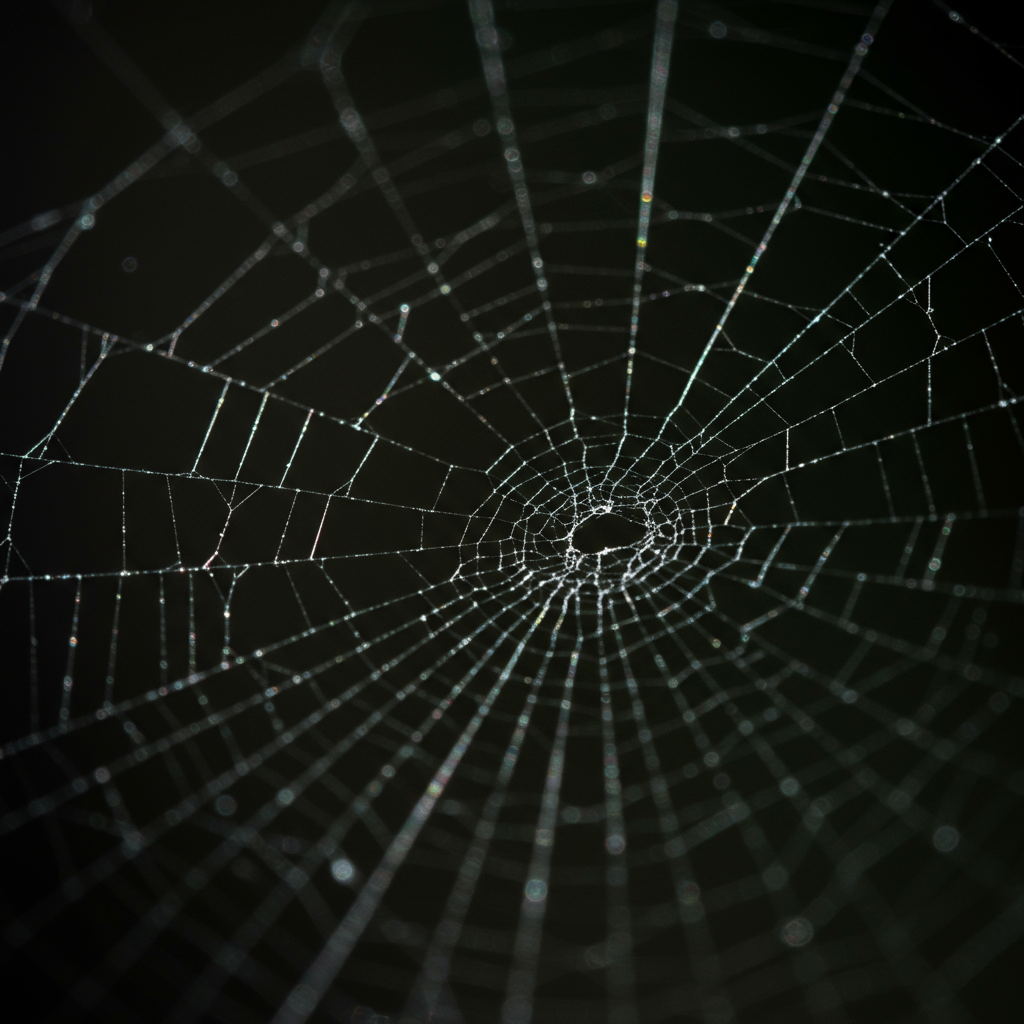Have you ever paused to admire a spider’s web, only to notice intricate zigzags woven into its delicate structure? These captivating patterns, known as stabilimenta, are more than just an aesthetic flourish. For years, scientists puzzled over their purpose, with theories ranging from predator deterrence to prey attraction. Now, groundbreaking research is unmasking the sophisticated engineering behind these silken decorations, revealing their crucial role in a spider’s sensory world and offering profound inspiration for human technology.
A recent study, published in PLOS One, offers compelling new insights, suggesting that stabilimenta act as a complex vibration detection system, essentially giving the spider “extra ears” to locate ensnared prey. This understanding not only deepens our appreciation for arachnid ingenuity but also paves the way for innovative bio-inspired materials.
Unraveling the Mystery: What Are Stabilimenta?
Stabilimenta are distinct silk structures, often appearing as zigzags, spirals, or flattened discs, woven into the orb webs of many spider species, particularly the familiar garden dwellers. These are the classic circular webs you might imagine for Halloween, crafted with remarkable precision by spiders from the Araneidae family, commonly known as orb weavers. Species like the wasp spider (Argiope bruennichi) are renowned for their prominent stabilimenta.
For decades, the exact function of these elaborate web additions remained a subject of intense scientific debate. Early hypotheses suggested they might serve as:
Predator Deterrents: Making the spider and its web appear larger or more intimidating to birds.
Prey Attractors: Reflecting UV light to lure insects.
Temperature Regulation: Helping the spider manage its body temperature.
Water Collection: Assisting in gathering dew or moisture.
However, a new theory proposed by physicist Gabriele Greco and his team at the Swedish University of Agricultural Sciences and the Italian Society of Arachnology has shifted the focus to the web’s mechanical properties and the spider’s sophisticated sensory system.
The Web as an Acoustic Architecture
Spiders, many of whom have poor vision, rely heavily on vibrations transmitted through their webs to sense their environment and detect dinner. The web acts as an extended sensory organ, a complex network of “tripwires” that alerts the spider to even the slightest disturbance. Greco’s team hypothesized that stabilimenta might optimize how these vital vibrations spread across the web, making prey detection more efficient.
To test this, they studied the webs of wasp spiders (Argiope bruennichi) in the field, meticulously observing how these spiders construct their stabilimenta. This field data then informed sophisticated numerical simulations. These simulations modeled how the unique geometries of the silken decorations influenced vibration propagation within the web and, critically, the “detection points” where a spider could perceive these subtle movements.
The breakthrough came when researchers adjusted the angle of vibration in their models. They discovered that the effectiveness of stabilimenta in altering vibrations was highly dependent on their shape and orientation. Vibrations moving parallel to the web’s spiral threads were significantly enhanced and traveled farther across the web, effectively channeling information back to the spider. Conversely, vibrations moving perpendicular to the web’s “spokes” showed little to no difference in propagation. This suggests that certain stabilimenta configurations act like an “acoustic bridge,” redirecting and amplifying specific types of vibrational signals that might otherwise be lost.
Beyond Decoration: A Functional Alarm System
“This study reveals that the decorative stabilimentum in Argiope bruennichi webs is more than just ornament,” noted the authors. “It subtly changes how certain vibrations travel through the web.” This finding implies that stabilimenta are not merely decorative but are integral to the spider’s ability to efficiently locate prey. Imagine installing extra doorbells around your house so you never miss a delivery – stabilimenta function similarly, extending the spider’s “listening” range.
This new research complicates earlier views, suggesting that the stabilimentum’s effect is “far less straightforward than one might expect.” While the study is a simulation and needs further real-world behavioral validation, it offers a compelling explanation for these previously enigmatic structures. Ecologists like Shichang Zhang and researchers like Todd Blackledge and Fritz Vollrath acknowledge the innovative approach but emphasize the need for more empirical data from live spiders to fully corroborate the model’s findings.
Spider Webs and the Future of Technology
The intricate designs of spider webs have long fascinated engineers and material scientists. Their hierarchical structures and unique acoustic properties make them prime candidates for bio-inspired designs. The understanding of stabilimenta’s role in vibration propagation opens up exciting possibilities for technological advancements.
Specifically, the ability of these silk structures to broaden a web’s sensitivity to certain vibration types – particularly those tangential to the spiral – could inspire the creation of advanced:
Vibration Sensors: More responsive and finely tuned sensors for industrial applications or structural monitoring.
Pressure Sensors: Highly sensitive devices that can detect subtle changes in pressure.
Acoustic Metamaterials: New materials with tunable elastic and acoustic properties, potentially revolutionizing sound insulation, sonar technology, or even medical diagnostics.
Gabriele Greco hopes to dedicate future work to understanding this “mechanical role for stabilimenta,” highlighting how nature’s own “DIY decorators” have already perfected sophisticated material science that humanity spends billions trying to achieve.
The Broader Ecological Context of Spider Webs
While the purpose of stabilimenta continues to be explored, the broader significance of spiders and their webs in ecosystems is undeniable. Orb weavers, found globally in diverse environments from gardens to forests, are crucial natural predators. They play a vital role in controlling insect populations, making them beneficial neighbors in our gardens and backyards.
Interestingly, external research from places like Guam reveals the profound impact of ecological disruptions on spider populations and web characteristics. On Guam, the introduction of the invasive brown tree snake led to the near-extinction of native bird species. With fewer birds (natural predators of spiders and web destroyers), the spider population exploded, with numbers up to 40 times higher than on neighboring islands. Webs, including those of banana spiders, were found to be 50% larger. Intriguingly, spiders on Guam showed a lack of stabilimenta, potentially because the absence of birds meant they no longer needed the warning signals these structures might once have provided. This unique situation underscores the adaptive nature of spider web construction and its sensitivity to environmental pressures.
Even invasive species like the Joro spider, a colorful orb weaver currently spreading across the U.S. Eastern Seaboard, contribute to natural pest control. Despite their striking appearance and large webs, Joro spiders are relatively harmless to humans and pets, with fangs often too small to break human skin. Their ability to survive colder temperatures and “balloon” on wind currents facilitates their spread, but they generally pose no significant threat to local ecosystems and may even provide an additional food source for native birds.
The next time you encounter a spider web, take a moment to appreciate the incredible engineering at play. These intricate structures, with their mysterious zigzags, are not just sticky traps but sophisticated sensory networks offering a glimpse into the wonders of the natural world and a blueprint for future human innovation.
Frequently Asked Questions
What exactly are stabilimenta and what is their primary function?
Stabilimenta are distinct, often zigzag-shaped, silk patterns woven into the orb webs of certain spider species, particularly orb weavers like the wasp spider (Argiope bruennichi*). For a long time, their purpose was debated. Recent research, including a study by physicist Gabriele Greco, suggests their primary function is to enhance the spider’s ability to detect vibrations across its web. They act as an “acoustic bridge,” channeling and amplifying specific vibrational signals from ensnared prey, effectively extending the spider’s sensory range.
How does this research inspire new technologies?
The intricate design and vibrational properties of stabilimenta offer significant inspiration for advancements in human technology. Scientists are studying how these silk structures broaden a web’s sensitivity to certain vibration types. This understanding could lead to the development of highly sensitive vibration and pressure sensors, acoustic metamaterials with tunable properties, and other bio-inspired materials. These innovations could have applications in fields ranging from structural monitoring and advanced robotics to medical diagnostics.
Should I be worried about the spiders in my garden with these zigzags?
Generally, no. The spiders that build orb webs with stabilimenta, such as orb weavers and even invasive species like the Joro spider, are largely harmless to humans and pets. They play a beneficial role in controlling insect populations in your garden. Their bites are usually mild, comparable to a mosquito bite, and they are shy, preferring to avoid human contact. Rather than being a cause for concern, these spiders are fascinating examples of natural engineering and contribute positively to local ecosystems.




